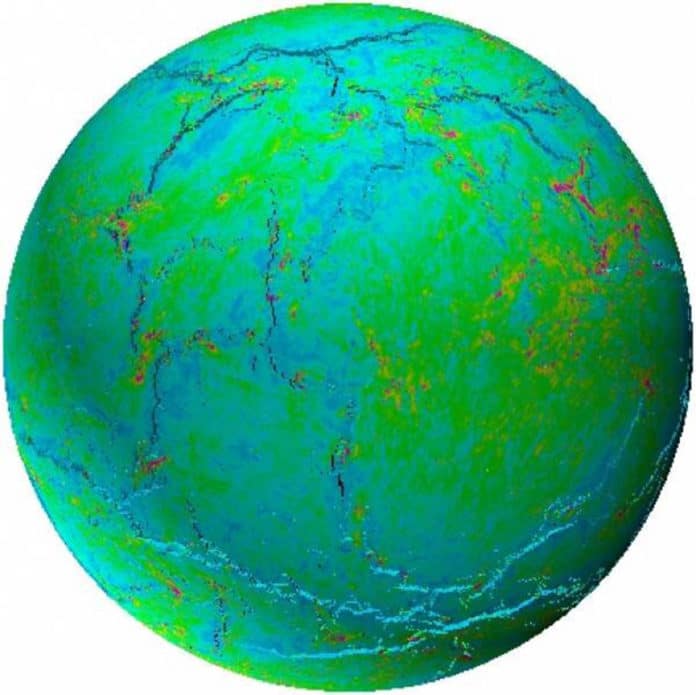The theory of plate tectonics well describes the activity of the solid Earth—for example, volcanoes in Java, earthquakes in Japan, etc. The theory describes the large-scale motion of seven large plates and the movements of a more significant number of smaller plates of Earth’s lithosphere since tectonic processes began on Earth between 3.3 and 3.5 billion years ago.
Although, the scientific community has no firm concept on how plate tectonics got started.
A new answer comes out from Dr. Alexander Webb of the Division of Earth and Planetary Science & Laboratory for Space Research at the University of Hong Kong, in collaboration with an international team.
According to the team, early Earth’s shell heated up, which caused expansion that generated cracks. These cracks grew and coalesced into a global network, subdividing early Earth’s shell into plates.
They illustrated this idea via a series of numerical simulations, using a fracture mechanics code. Each simulation tracks the stress and deformation experienced by a thermally-expanding shell. The shells can generally withstand about 1 km of thermal expansion (Earth’s radius is ~6371 km), but additional expansion leads to fracture initiation and the rapid establishment of the global fracture network.
Even though this new model is simple enough— Earth’s early shell warmed up, expanded, and cracked—superficially, this model resembles long-discredited ideas and contrasts with basic physical precepts of Earth science.
Before the plate tectonic revolution of the 1960s, Earth’s activities and the distribution of oceans and continents were explained by a variety of hypotheses, including the so-called expanding Earth hypothesis. Luminaries such as Charles Darwin posited that major earthquakes, mountain-building, and the distribution of land-masses were thought to result from the expansion of the Earth. However, because Earth’s major internal heat source is radioactivity, and the continuous decay of radioactive elements means that there is less available heat as time moves forward, a thermal expansion might be considered far less likely than its opposite: thermal contraction.
Dr. Webb said, “The answer lies in consideration of major heat-loss mechanisms that could have occurred during Earth’s early periods. If volcanic advection, carrying hot material from depth to the surface, was the major mode of early heat-loss, that changes everything.”
This is because new hot volcanic material taken from Earth’s depths would have been deposited as cool material at the surface—the heat would be lost to space. The evacuation at depth and accumulating at the surface would have eventually necessitated that the surface material sank, bringing cold material downwards.
This continual downward motion of cold surface material would have had a chilling effect on the early lithosphere. Because Earth was cooling overall, the heat production and corresponding volcanism would have slowed down.
Correspondingly, the downwards motion of the lithosphere would have slowed with time. Along these lines, even as the overall planet cooled, the chilled lithosphere would have been increasingly warmed by means of conduction from hot in-depth material beneath. This warming would have been the wellspring of the thermal expansion invoked in the new model. The new modeling delineates that if Earth‘s solid lithosphere is adequately thermally extended, it will fracture, and the fast growth of a fracture network would divide the Earth’s lithosphere into plates.
Journal Reference:
- C. A. Tang et al. Breaking Earth’s shell into a global plate network, Nature Communications (2020). DOI: 10.1038/s41467-020-17480-2
